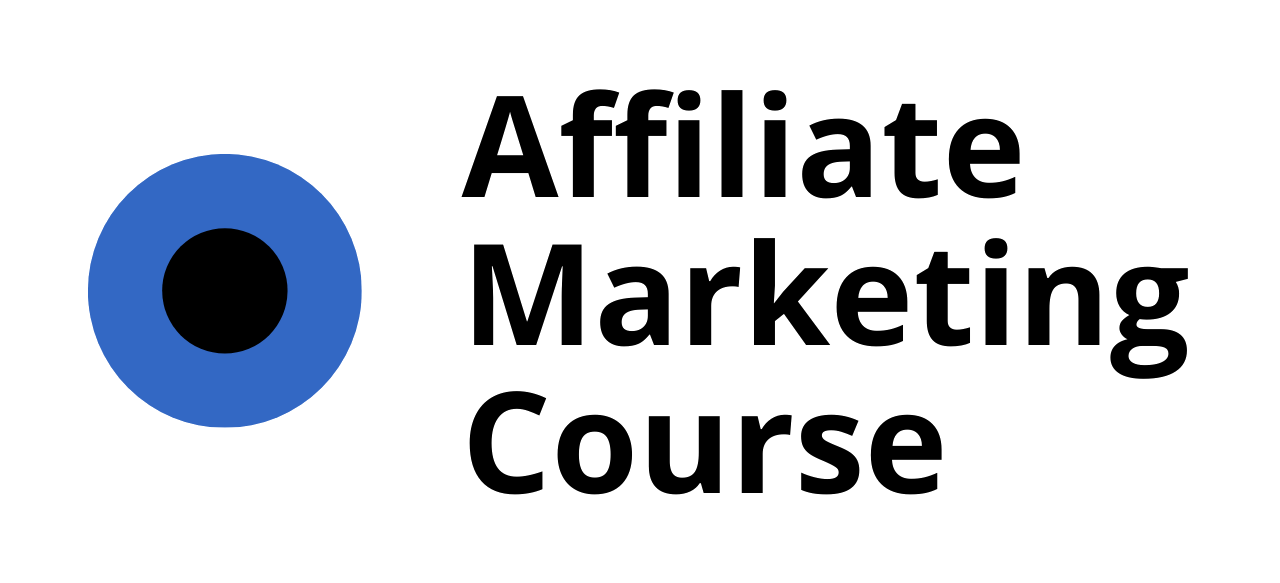In today’s fast-paced digital world, businesses are constantly seeking innovative ways to expand their reach and maximize profitability. One of the most effective platforms for achieving this goal is social media, particularly Twitter, which has emerged as a powerful tool for connecting with audiences and driving engagement. For those looking to amplify their affiliate marketing efforts, leveraging Twitter’s unique features can open doors to unprecedented success. This article dives into advanced strategies for affiliate marketing with Twitter, exploring how businesses can effectively harness the platform to grow their brand, increase visibility, and achieve measurable results. From mastering Twitter’s search features to utilizing its analytics tools, we’ll uncover actionable tips and techniques that can transform your affiliate marketing efforts. Whether you’re a seasoned marketer or just getting started, this guide offers valuable insights to help you navigate the complexities of affiliate marketing with Twitter and unlock its full potential.
Key Takeaways
– Optimize Your Profile: Craft a compelling username, use a professional image, and include a clear bio with a CTA link to your affiliate program.
– Engage Authentically: Share valuable content, respond to comments, and retweet to build trust and foster genuine connections.
– Collaborate with Influencers: Partner with micro-influencers to organically promote your affiliate program and reach a targeted audience.
– Track Performance: Use Twitter Analytics to monitor engagement, follower growth, and click-through rates to refine your strategy.
– Leverage Twitter Ads: Run targeted ads to promote your affiliate offers and boost visibility among specific demographics.
– Post Consistently: Maintain engagement by posting 3-5 times weekly, balancing promotional tweets with valuable content.
– Use Visuals: Enhance engagement with images, infographics, and videos to capture attention and improve shareability.
– Build Relationships: Network with industry leaders, engage in conversations, and stay active in your niche community.
– Comply with Guidelines: Always adhere to Twitter’s policies to avoid spam flags and maintain trust with your audience.

How Can Businesses Effectively Use Twitter for Affiliate Marketing?
To effectively leverage Twitter for affiliate marketing, businesses should adopt a strategic approach that balances promotional efforts with meaningful engagement. Here’s a step-by-step guide to maximizing Twitter’s potential for affiliate marketing:
- Optimize Your Profile
- Username : Choose a username that reflects your brand or niche.
- Profile Picture : Use a professional image that aligns with your brand identity.
- Bio : Craft a concise bio that includes your niche, unique selling points, and a call-to-action (CTA) link to your affiliate program or landing page.
- Link in Bio : Ensure your primary CTA link directs users to your affiliate marketing landing page or signup form.
- Content Strategy
- Tweet Topics : Share a mix of educational content, industry news, and engaging polls to establish thought leadership.
- Hashtags : Use relevant hashtags to increase visibility. Start with niche-specific hashtags and branch out to broader ones like #Marketing or #DigitalMarketing.
- Engage Authentically : Respond to comments, retweet valuable content, and participate in conversations to build trust.
- Collaborate with Influencers
- Partner with micro-influencers who have a strong following in your niche. They can promote your affiliate program organically, reaching a targeted audience.
- Offer them incentives like exclusive discounts or commissions to encourage participation.
- Track Performance
- Use Twitter Analytics to monitor engagement rates, follower growth, and click-through rates on your links.
- Track hashtag performance to identify trending topics that resonate with your audience.
- Leverage Twitter Ads
- Run targeted ads promoting your affiliate program to reach specific demographics or interests.
- Use carousel ads to showcase your products or services in an visually appealing format.
- Best Practices
- Post consistently but not excessively. Aim for 3-5 times per week to maintain visibility without overwhelming followers.
- Balance promotional tweets with valuable content to avoid coming across as spammy.
- Use images, infographics, and videos to capture attention and improve engagement.
By following these strategies, businesses can effectively harness Twitter’s power to drive traffic, build brand awareness, and grow their affiliate marketing programs. Remember to always comply with Twitter’s guidelines and optimize your content for readability and shareability.
How Can Businesses Effectively Use Twitter for Affiliate Marketing?
To effectively leverage Twitter for affiliate marketing, businesses should adopt a strategic approach that balances promotional efforts with meaningful engagement. Here’s a step-by-step guide to maximizing Twitter’s potential for affiliate marketing:
- Optimize Your Profile
- Username : Choose a username that reflects your brand or niche.
- Profile Picture : Use a professional image that aligns with your brand identity.
- Bio : Craft a concise bio that includes your niche, unique selling points, and a call-to-action (CTA) link to your affiliate program or landing page.
- Link in Bio : Ensure your primary CTA link directs users to your affiliate marketing landing page or signup form.
- Content Strategy
- Tweet Topics : Share a mix of educational content, industry news, and engaging polls to establish thought leadership.
- Hashtags : Use relevant hashtags to increase visibility. Start with niche-specific hashtags and branch out to broader ones like #Marketing or #DigitalMarketing.
- Engage Authentically : Respond to comments, retweet valuable content, and participate in conversations to build trust.
- Collaborate with Influencers
- Partner with micro-influencers who have a strong following in your niche. They can promote your affiliate program organically, reaching a targeted audience.
- Offer them incentives like exclusive discounts or commissions to encourage participation.
- Track Performance
- Use Twitter Analytics to monitor engagement rates, follower growth, and click-through rates on your links.
- Track hashtag performance to identify trending topics that resonate with your audience.
- Leverage Twitter Ads
- Run targeted ads promoting your affiliate program to reach specific demographics or interests.
- Use carousel ads to showcase your products or services in an visually appealing format.
- Best Practices
- Post consistently but not excessively. Aim for 3-5 times per week to maintain visibility without overwhelming followers.
- Balance promotional tweets with valuable content to avoid coming across as spammy.
- Use images, infographics, and videos to capture attention and improve engagement.
By following these strategies, businesses can effectively harness Twitter’s power to drive traffic, build brand awareness, and grow their affiliate marketing programs. Remember to always comply with Twitter’s guidelines and optimize your content for readability and shareability.

How Can Businesses Effectively Use Twitter for Affiliate Marketing?
To effectively leverage Twitter for affiliate marketing, businesses should adopt a strategic approach that balances promotional efforts with meaningful engagement. Here’s a step-by-step guide to maximizing Twitter’s potential for affiliate marketing:
- Optimize Your Profile
- Username : Choose a username that reflects your brand or niche.
- Profile Picture : Use a professional image that aligns with your brand identity.
- Bio : Craft a concise bio that includes your niche, unique selling points, and a call-to-action (CTA) link to your affiliate program or landing page.
- Link in Bio : Ensure your primary CTA link directs users to your affiliate marketing landing page or signup form.
- Content Strategy
- Tweet Topics : Share a mix of educational content, industry news, and engaging polls to establish thought leadership.
- Hashtags : Use relevant hashtags to increase visibility. Start with niche-specific hashtags and branch out to broader ones like #Marketing or #DigitalMarketing.
- Engage Authentically : Respond to comments, retweet valuable content, and participate in conversations to build trust.
- Collaborate with Influencers
- Partner with micro-influencers who have a strong following in your niche. They can promote your affiliate program organically, reaching a targeted audience.
- Offer them incentives like exclusive discounts or commissions to encourage participation.
- Track Performance
- Use Twitter Analytics to monitor engagement rates, follower growth, and click-through rates on your links.
- Track hashtag performance to identify trending topics that resonate with your audience.
- Leverage Twitter Ads
- Run targeted ads promoting your affiliate program to reach specific demographics or interests.
- Use carousel ads to showcase your products or services in an visually appealing format.
- Best Practices
- Post consistently but not excessively. Aim for 3-5 times per week to maintain visibility without overwhelming followers.
- Balance promotional tweets with valuable content to avoid coming across as spammy.
- Use images, infographics, and videos to capture attention and improve engagement.
By following these strategies, businesses can effectively harness Twitter’s power to drive traffic, build brand awareness, and grow their affiliate marketing programs. Remember to always comply with Twitter’s guidelines and optimize your content for readability and shareability.

How Can Businesses Effectively Use Twitter for Affiliate Marketing?
To effectively leverage Twitter for affiliate marketing, businesses should adopt a strategic approach that balances promotional efforts with meaningful engagement. Here’s a step-by-step guide to maximizing Twitter’s potential for affiliate marketing:
- Optimize Your Profile
- Username : Choose a username that reflects your brand or niche.
- Profile Picture : Use a professional image that aligns with your brand identity.
- Bio : Craft a concise bio that includes your niche, unique selling points, and a call-to-action (CTA) link to your affiliate program or landing page.
- Link in Bio : Ensure your primary CTA link directs users to your affiliate marketing landing page or signup form.
- Content Strategy
- Tweet Topics : Share a mix of educational content, industry news, and engaging polls to establish thought leadership.
- Hashtags : Use relevant hashtags to increase visibility. Start with niche-specific hashtags and branch out to broader ones like #Marketing or #DigitalMarketing.
- Engage Authentically : Respond to comments, retweet valuable content, and participate in conversations to build trust.
- Collaborate with Influencers
- Partner with micro-influencers who have a strong following in your niche. They can promote your affiliate program organically, reaching a targeted audience.
- Offer them incentives like exclusive discounts or commissions to encourage participation.
- Track Performance
- Use Twitter Analytics to monitor engagement rates, follower growth, and click-through rates on your links.
- Track hashtag performance to identify trending topics that resonate with your audience.
- Leverage Twitter Ads
- Run targeted ads promoting your affiliate program to reach specific demographics or interests.
- Use carousel ads to showcase your products or services in an visually appealing format.
- Best Practices
- Post consistently but not excessively. Aim for 3-5 times per week to maintain visibility without overwhelming followers.
- Balance promotional tweets with valuable content to avoid coming across as spammy.
- Use images, infographics, and videos to capture attention and improve engagement.
By following these strategies, businesses can effectively harness Twitter’s power to drive traffic, build brand awareness, and grow their affiliate marketing programs. Remember to always comply with Twitter’s guidelines and optimize your content for readability and shareability.
Top Strategies for Using Twitter in Affiliate Marketing
Twitter can be a highly effective platform for affiliate marketers looking to reach a broad audience and drive conversions. Here are some proven strategies to maximize your affiliate marketing efforts on Twitter:
- Build a Compelling Profile
- Create a professional profile with a clear picture, bio, and links to your website or landing pages.
- Include your niche or area of expertise in your bio to attract targeted followers.
- Optimize your profile link to point to your affiliate marketing landing page or blog.
- Engage with Industry Leaders
- Follow industry experts, influencers, and thought leaders in your niche.
- Participate in conversations and discussions related to affiliate marketing.
- Network with other marketers to build relationships and collaborate on projects.
- Create Valuable Content
- Share educational content like tutorials, case studies, and tips related to affiliate marketing.
- Post engaging polls, quizzes, and surveys to interact with your audience.
- Repurpose your blog content or videos into short, tweetable formats.
- Collaborate with Influencers
- Partner with micro-influencers who have a loyal following in your niche.
- Offer them free products or services in exchange for promotion.
- Collaborate on Twitter chats or co-host sessions to reach a wider audience.
- Use Hashtags Wisely
- Choose relevant hashtags to increase your tweet’s visibility, such as #AffiliateMarketing, #DigitalMarketing, and #SocialMedia.
- Follow trending hashtags in your niche to join relevant conversations.
- Use a mix of popular and niche-specific hashtags to target your audience effectively.
- Promote Offers Effectively
- Link to your affiliate offer pages in your tweets, ensuring they are mobile-friendly and load quickly.
- Use eye-catching visuals like images, infographics, and videos to grab attention.
- Schedule your promotional tweets strategically during peak engagement times.
- Leverage Twitter Ads
- Run targeted ads campaigns to promote your affiliate offers to specific demographics.
- Use Twitter’s ad platform to create visually appealing ads with clear CTAs.
- Bid on trending keywords or topics related to your niche to increase visibility.
- Monitor Performance
- Use Twitter Analytics to track engagement, follower growth, and click-through rates.
- Adjust your strategy based on performance data to optimize your efforts.
- Experiment with different posting times and content types to find what works best.
- Build Lasting Connections
- Engage with your followers consistently by responding to their messages and retweeting their content.
- Use direct messaging to connect with potential affiliates or partners.
- Stay active in your niche communities to build trust and credibility.
By implementing these strategies, you can effectively leverage Twitter to grow your affiliate marketing business and achieve your goals. Remember to always promote high-quality products and services, and focus on delivering value to your audience.

Best Strategies for Using Twitter in Affiliate Marketing
Twitter can be a highly effective platform for affiliate marketing, allowing you to reach a broad audience, build relationships, and promote products or services. Here are some proven strategies to maximize your success:
- Leverage Twitter for Networking
- Follow industry leaders, influencers, and other affiliates in your niche.
- Engage with your followers by replying to their tweets and questions.
- Join Twitter chats or discussions related to your niche to connect with potential partners.
- Create Shareable Content
- Share valuable content such as blog posts, tutorials, or product reviews that include your affiliate links.
- Use visuals like images, infographics, or videos to grab attention and encourage sharing.
- Include your affiliate links in resource guides or “best of” lists.
- Promote Affiliate Offers
- Tweet promotional links directly, but ensure they are relevant and add value to the tweet.
- Host Twitter threads or polls to discuss affiliate opportunities or share tips.
- Participate in trending conversations or hashtags related to your niche.
- Use Hashtags Wisely
- Choose hashtags that align with your audience to increase visibility.
- Stay updated on trending hashtags in your niche to join relevant conversations.
- Create your own branded hashtag for your affiliate program to track engagement.
- Collaborate with Influencers
- Partner with influencers or bloggers who align with your affiliate program.
- Mention your affiliate program in collaborative posts or shoutouts.
- Offer incentives for influencers to promote your affiliate links.
- Stay Active and Engaged
- Post consistently to keep your audience engaged and informed.
- Respond to comments, mentions, and messages to build trust and relationships.
- Take part in discussions related to your niche to establish yourself as an expert.
- Monitor and Optimize
- Track the performance of your tweets and adjust your strategy based on analytics.
- Monitor engagement levels, click-through rates, and conversion rates.
- A/B test different approaches to see what works best for your audience.
- Comply with Twitter Guidelines
- Always follow Twitter’s rules regarding spam, promotions, and content policies.
- Be transparent about affiliate relationships to maintain trust with your audience.
- Avoid aggressive promotion tactics that may violate Twitter’s terms of service.
By implementing these strategies, you can effectively use Twitter to grow your affiliate marketing business, build a loyal audience, and achieve your business goals.




0 Comments